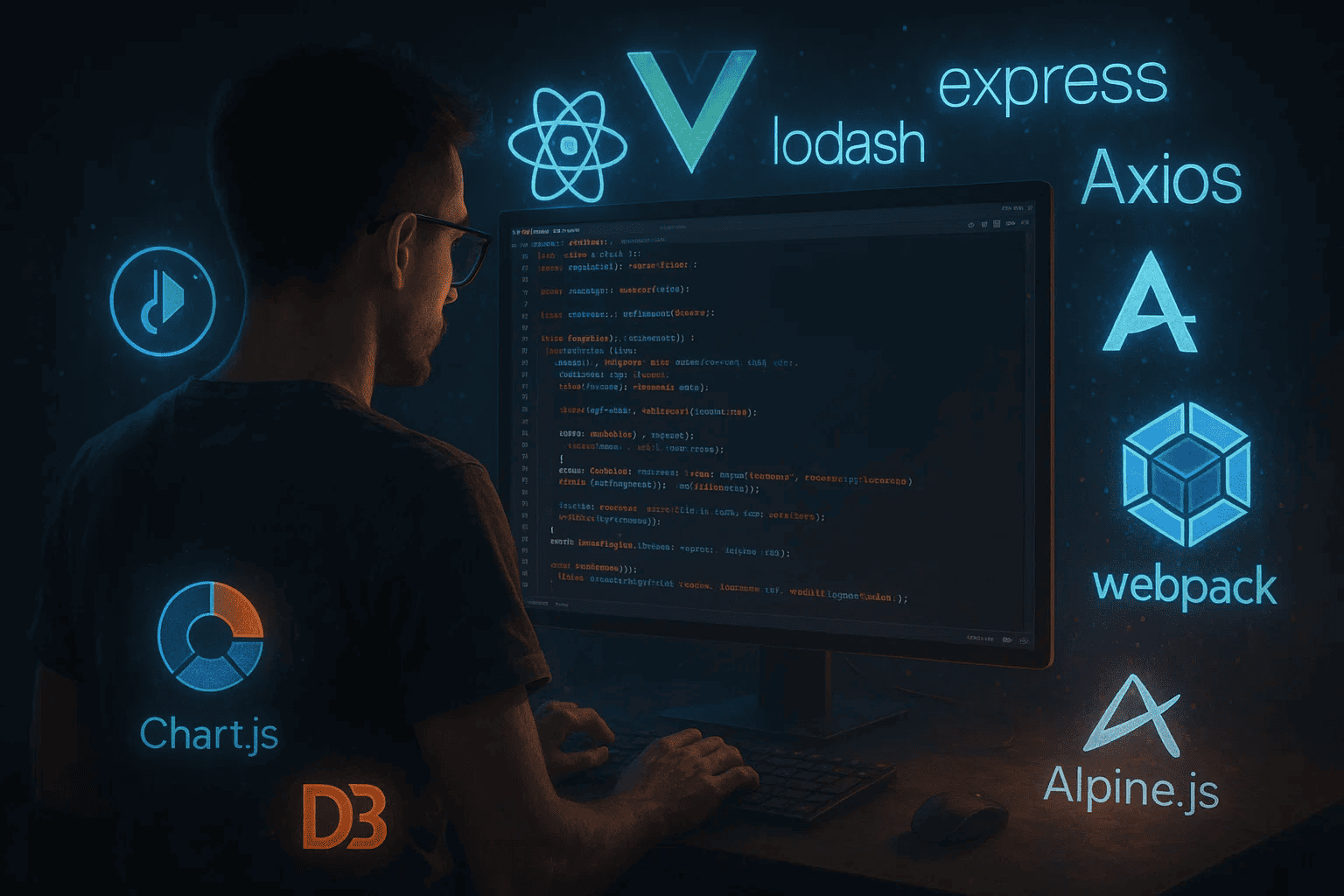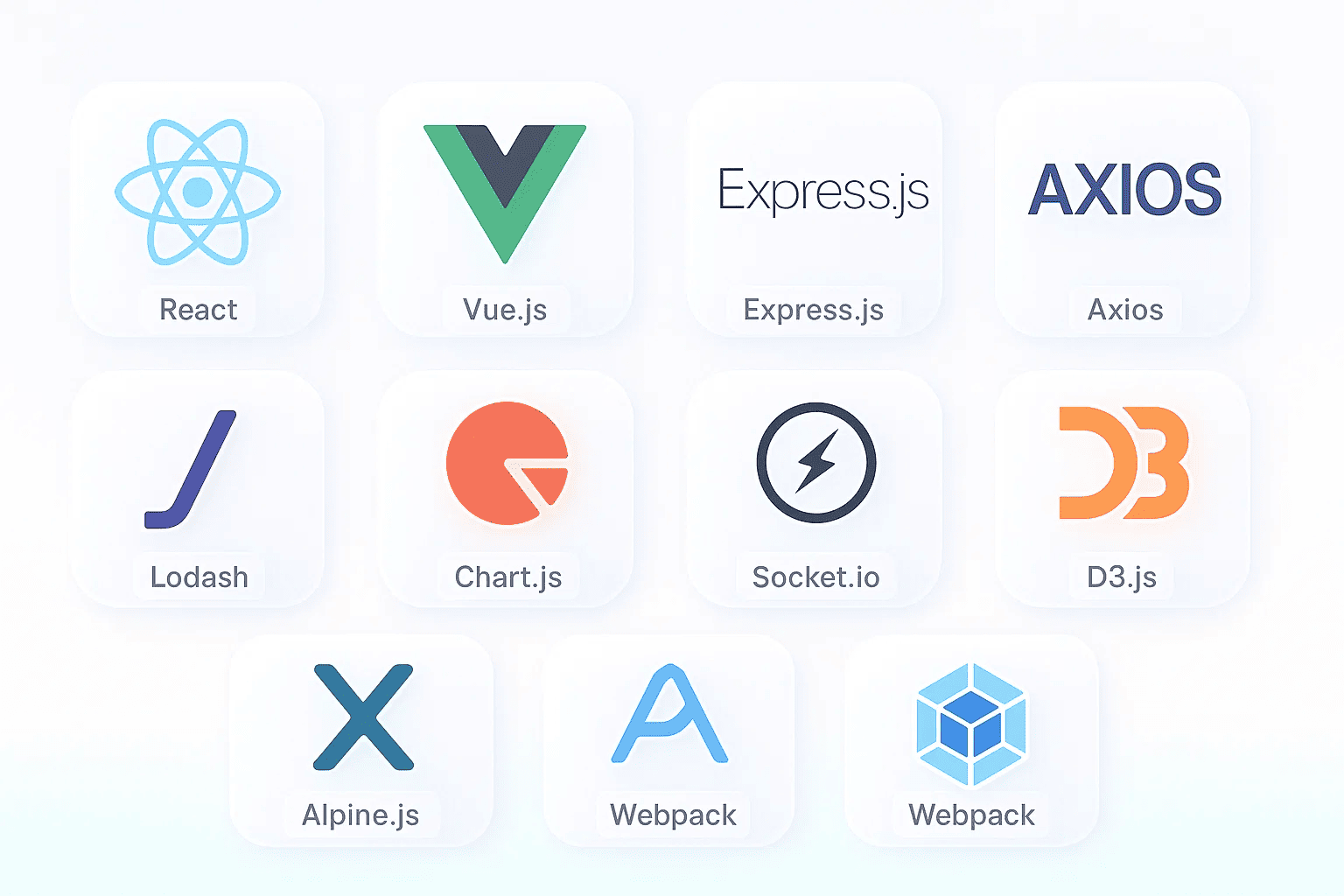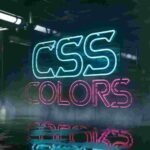
JavaScript development has become more sophisticated and efficient with the abundance of powerful libraries available to developers. These tools significantly reduce development time, improve code quality, and enhance productivity. Here are the top 10 JavaScript libraries that will accelerate your development process in 2025.
React continues to dominate the frontend development landscape as the most popular JavaScript library for building user interfaces. Developed by Facebook, React’s component-based architecture allows developers to create reusable UI components, making complex application management more straightforward.
Why It Speeds Up Development:
React’s component reusability means you write once and use everywhere, dramatically reducing development time. The vast ecosystem provides pre-built solutions for most common requirements, from state management (Redux) to routing (React Router).
Best For: Single-page applications, dynamic web interfaces, and large-scale projects requiring maintainable code architecture.

Express.js remains the most popular backend framework for Node.js applications. This minimal and unopinionated framework provides a robust set of features for web and mobile applications without imposing rigid structure.
Why It Speeds Up Development:
Express.js eliminates boilerplate code and provides essential web server functionality out of the box. Its middleware ecosystem allows developers features.
Best For: RESTful APIs, web applications, and rapid prototyping of backend services.
Lodash is a comprehensive utility library that provides helper functions for common programming tasks. It simplifies working with arrays, objects, numbers, strings, and functions using a functional programming approach.
Why It Speeds Up Development:
Instead of writing repetitive utility functions, developers can leverage Lodash’ s battle-tested implementations. Functions like map, filter, reduce, and debounce are immediately available, saving hours of development time.
Best For: Data processing, array/object manipulation, and functional programming patterns.
Axios is a promise-based HTTP client that works seamlessly in both browser and Node.js environments. It simplifies API communication with features like request/response interception and automatic JSON data handling.
Why It Speeds Up Development:
Axios eliminates the complexity of working with native fetch APIs or XMLHttpRequest. Its intuitive syntax and comprehensive error handling reduce debugging time significantly.
Best For: API integration, HTTP requests, and any application requiring server communication.
Vue.js offers an approachable and versatile framework for building user interfaces. Known for its gentle learning curve and flexible architecture, Vue can be incrementally adopted in existing projects.
Why It Speeds Up Development:
Vue’s intuitive template syntax and excellent documentation make it quick to learn and implement. The framework’s flexibility allows developers to use as much or as little as needed
Best For: Rapid prototyping, small to medium applications, and teams wanting a balance between simplicity and power.
Chart.js provides beautiful, responsive charts with minimal configuration. This Canvas-based library offers excellent performance and a wide variety of chart types.
Why It Speeds Up Development:
Creating professional-looking charts requires minimal code with Chart.js. The library handles responsive behavior and animations automatically, saving significant development time.
Best For: Dashboards, data visualization, and any application requiring interactive charts.

Socket.io enables real-time, bidirectional communication between clients and servers. It provides a reliable foundation for building real-time applications with fallback mechanisms for various network conditions.
Why It Speeds Up Development:
Socket.io abstracts the complexity of WebSocket implementation while providing robust fallback mechanisms. Developers can focus on application logic rather than connection management.
Best For: Chat applications, real-time collaboration tools, live updates, and multiplayer games.
D3.js is the most powerful JavaScript library for creating custom data visualizations. While it has a steeper learning curve, it offers unparalleled flexibility for creating bespoke visualizations.
Why It Speeds Up Development:
For complex, custom visualizations that standard charting libraries cannot handle, D3.js provides the building blocks needed. Its comprehensive feature set eliminates the need to build visualization infrastructure from scratch.
Best For: Custom visualizations, interactive dashboards, and data-heavy applications requiring unique presentation formats.
Alpine.js brings reactive functionality to HTML with minimal overhead. Often described as “jQuery for the modern web,” it allows developers to add interactivity directly in markup.
Why It Speeds Up Development:
Alpine.js is perfect for adding interactive elements to static sites without the overhead of larger frameworks. Its simple syntax allows rapid implementation of common UI patterns.
Best For: Static sites needing interactivity, progressive enhancement, and small applications where full frameworks would be overkill.
Webpack is the industry-standard tool for bundling JavaScript applications. It processes and optimizes code, assets, and dependencies for production deployment.
Why It Speeds Up Development:
Webpack automates the build process, enabling developers to use modern JavaScript features, import statements, and asset optimization without manual configuration. Hot module replacement speeds up the development cycle significantly.
Best For: Large applications, modern JavaScript development, and any project requiring build optimization.
When choosing libraries for your projects, consider these factors:
| Factor | Considerations |
|---|---|
| Learning Curve | Time investment vs. productivity gains |
| Community Support | Documentation quality, tutorials, and community size |
| Performance | Bundle size impact and runtime efficiency |
| Ecosystem | Available plugins, extensions, and integrations |
| Maintenance | Active development and long-term viability |
The JavaScript ecosystem continues evolving with several key trends:
These ten JavaScript libraries represent the essential toolkit for modern web development. Each serves specific needs while contributing to overall development velocity. React and Vue.js handle UI complexity, Express.js simplifies backend development, while utilities like Lodash and Axios eliminate common programming friction.
The key to maximizing productivity is understanding when and how to leverage each library’s strengths. Start with the libraries that address your most common development challenges, then gradually expand your toolkit as projects demand specialized functionality.






Ghulam Ahmad is an Excellent Writer, His magical words added value in growth of our life. Highly Recommended
- Irfan Ahmad Tweet
4 Responses